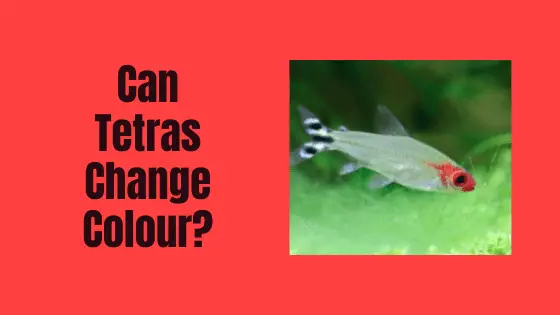If you are a tetra fish parent, you might have noticed that they have changed colour. Is this normal or is it something to worry about?
Tetras can change colour due to age, breeding status, and stresses caused by their environment such as temperature, diet, water quality, over-crowding, bullying, and diseases.
In this article, I’m going to share with you the possible reasons why tetras change colours, when they first get their colour, and how you can help to make your tetras more colourful.
So without further ado let’s dive in!
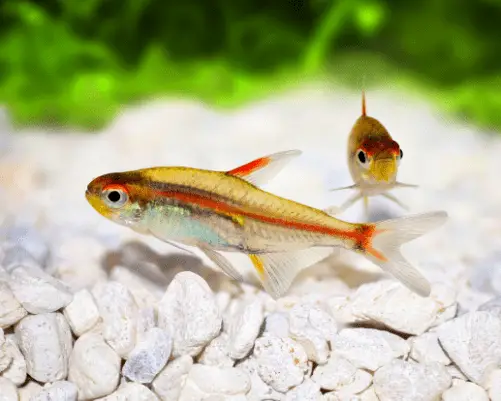
Here are some possible reasons why your tetra is changing colour:
Stress.
When you look at the fish in the pet shop or online, you might have noticed that some of them are very brightly coloured.
But when you bring them home and add them in the tank then you might notice that your tetra has started to change their colour. They can become noticeably paler.
So why does it happen? Yes, you guessed it right! It is due to their sudden change in environment.
Colour changes, discolouration or spots on your fish are some of the signs that indicate they could be suffering from stress.
Now, this stress could be due to many reasons. So let’s also discuss them one by one.
1. Sudden Change In Environment.
A sudden change in environment can cause the fish to feel stressed or frightened, as they are unsure of their new surroundings. You will notice that any new guppies added to your tank will look pale in colour. As they get used to their new home you will see their colouring gradually getting brighter.
I have 6 Neon Tetras in my tank, who I got when they were babies. It took a few weeks for them to get their lovely, bright red and blue colours. This was when I knew that were fully settled in their new home.
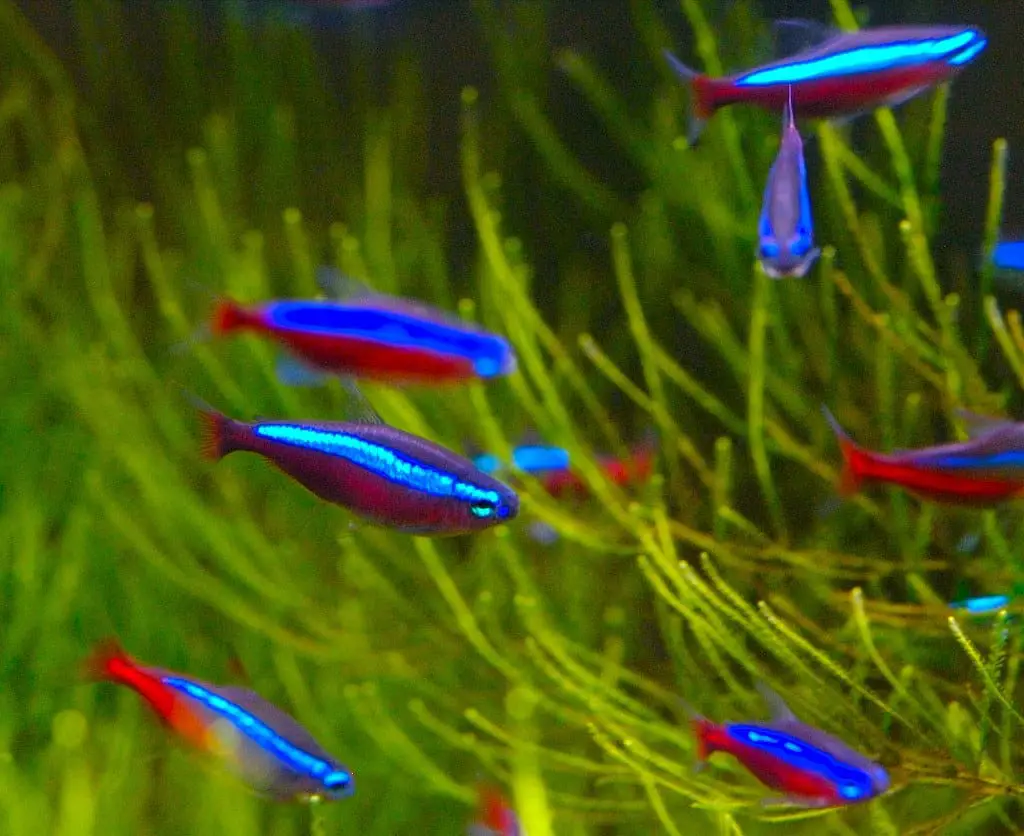
2. Under or Over Populated Tank.
Whenever you put too many fish in the same tank then the chances of stress between the fish increases dramatically.
The same can be said for there not being enough fish in your tank.
Tetras are sociable souls and need to be kept in a group of at least 6 or they could start to get stressed and lonely. This will lead to their colour fading.
So, always make sure you have a big enough tank where everyone has lots of space, and also ensure you have at least 6 tetras so they have got their little gang to hang out with.
3. Incorrect Temperature.
Most breeds of tetra require between 72-82 °F (22-28 °C) water temperature.
Keeping your tetras in too hot or too cold water can cause them to feel stressed which will ultimately affect their colour. It is also bad for their health.
4. Aggressive Tank Mates.
If you have aggressive tank mates that like to bully your tetras, then they are going to start to feel stressed.
You should have some ornaments as hiding places in your tank. as well as some plants. This will reduce the chance of the fish coming too close to each other and trouble brewing.
Also, tankmates should always be chosen wisely so that they don’t stress the fish you already have in your tank.
5. Poor Water Quality.
Not having good water quality in the tank will not only impact the tetra’s colour but also it will cause it to get stressed. Make sure you test your water regularly, and carry out partial water changes when required.
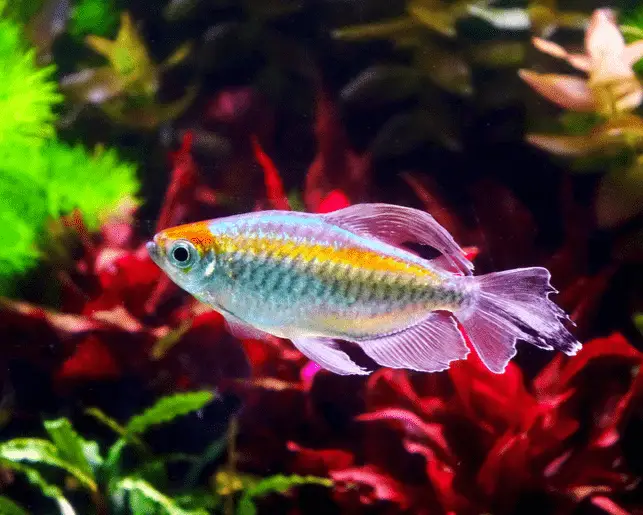
What is Stress in an Animal?
Stress is whenever an animal is not able to maintain its normal physiological state because of various factors that is affecting its well being.
Stress is caused in a fish whenever it gets in a situation which is outside its level tolerance. Some fish species have a higher level of tolerance than others.
It is your responsibility, as a fishy parent, to make sure that your fish don’t get stressed and thus remain healthy, active and retain its bright colours.
Now let’s discuss the other reasons for the colour change in tetras.
Ageing.
Yes, getting older can be a factor leading to a colour change in your tetra. And this is not just with fish. In any living body, as it starts aging, the body’s systems and functions start to deteriorate slowly.
With fish though, it can be as simple as going from a baby to an adult fish, especially with the males.
With ageing, cellular growth is reduced. So if your fish is getting on a bit, you may start to notice a change in their colour.
One side note: If your tetra is lying on the bottom of the tank and has been for some time, and is looking very pale (almost translucent), unfortunately it is very probable they have passed away. Hopefully, you will have noticed a change in their colour well before this, and have taken steps to rectify any problem.
Related Post:
What to do when your Tropical Fish Dies
Change In Water Parameters
The water parameters also impact the change in the colour of a tetra. If you haven’t maintained your tank for sometime, then surely the level of toxins might have increased.
According to catfishvet.com, differences in the mineral content of the water where a fish was born and where it is living now can also cause the change in the colour of a fish.
So bad water conditions, or a big difference in pH levels can be a few of the reasons why your tetra has changed colour.
Diseases.
You might be noticing colour change in your tetra because of infection or disease.
For example, if your guppy is suffering from Ick, then you would notice small white spots on their skin and fin.
Improper Diet.
Although not directly, food plays a vital role in the colour of your tetra.
The quality of diet you give to your fish and also the amount will decide whether they will show bright colours or dull colours.
If you give good quality food to your fish they will become healthier – so your tetra will show brighter colours.
If you give bad quality food that lacks nutrients – your tetras could become ill and weak, and will start showing dull colours.
As a general rule, you shouldn’t overfeed or underfeed your tetras. And regarding the quality of the food, the more nutrients you give to your tetra, the better it is for them.
When Do Tetras Get Their Colours?
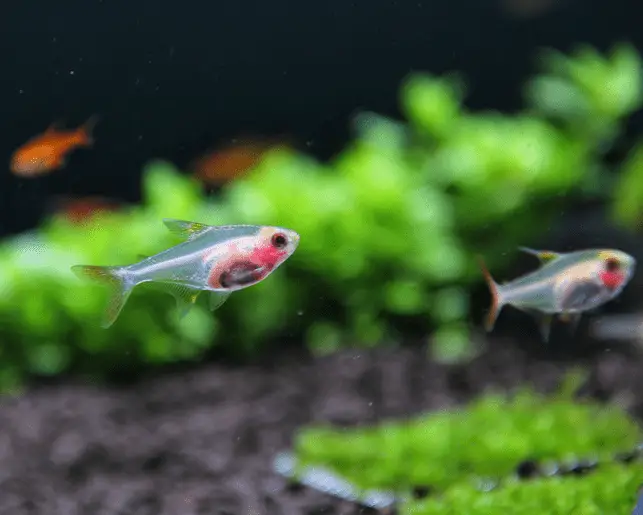
Before knowing how to make tetras colourful, it is important to understand when they start gaining colours.
At first, baby tetras may not look colourful or vibrant. But when they get to between 1 to 6 weeks, they start to gain some colour.
Genetics, diet and metabolism are some of the factors that contribute to when a tetra will get its colour.
Male tetras are a lot more colourful than females simply because during mating bright and vibrant colours help them to attract the mates. They need to stand out from the crowd!
How Can I Make My Tetras More Colourful?
Here are some tips to make your tetras more colourful:
- Make sure your tetras are fed adequately. Getting the proper amount of food is crucial for growth and colouration.
- Always try to give quality food to your tetras which is full of nutrients. This will help ensure better growth and colouration.
- Make sure to keep your tetras with peaceful tank mates that don’t harass or bully them.
- Have your tetras in an adequately sized tank, and also avoid overcrowding.
- Maintain proper and required water temperature and water quality for your tetras. This will allow them to remain active, healthy and show bright colours.
- Make sure you have the correct male to female tetra ratio. Ideally, it should be 1 male to 3 females.
- Have enough hiding places, use proper lighting and create such an environment to keep your tetras stress free.
Why Has My Tetra Turned Black?
Generally, a tetra can turn black due to some infection, stress or due to ammonia positioning.
Some tetras turn their eyes black to warn the other fish whenever they feel aggressive. So if you see black eyes then probably your tetra is having a bit of beef with one of the other fish in the tank.
If you are noticing the tail of your tetra turning black, then sadly it can be because of some infection.
High ammonia concentration is not good for fish. Your tetra’s tissues can get damaged and even cause change in coloration, black patches.
Why is my Tetra’s Head Turning Red?
Generally, due to ammonia poisoning, red spots can appear on your tetra fish. Ammonia poisoning occurs when the fish tank’s pH level gets elevated.
If there is a problem with your ammonia levels, you may notice your fish gasping at the surface for air. You may also see that the gills of your tetra become a reddish colour.
Make sure you carry out a full water test.
Ammonia poisoning is more likely to occur because you have either added fish to a tank that hasn’t fully cycled yet, or you have added too many fish to the tank too quickly, which has caused the ammonia to spike.
If you add any fish to a new tank then the ammonia level may rise quickly simply because of the lack of the beneficial bacteria which can transform these into nitrates.
Ammonia, even in small amounts can be quite harmful for your fish. And it is always better to avoid ammonia poisoning rather than having to treat your fish for it.
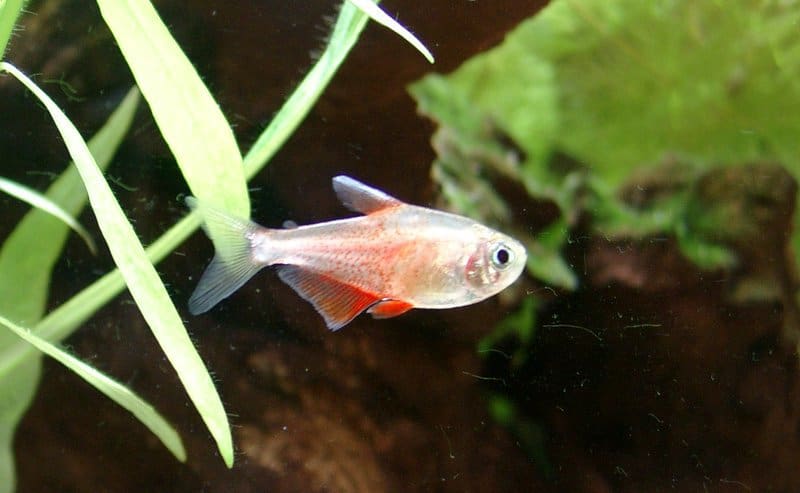
Conclusion
Can tetras change colours? Yes, tetras change colours mainly because of stress or some change in their environment. But there could also be reasons like aging, poor water quality, insufficient diet, and infection that causes the change in colour of your tetras.
Generally, if they go brighter, it is a good sign. However, if they go paler, or change colour in places, then there is something wrong.

